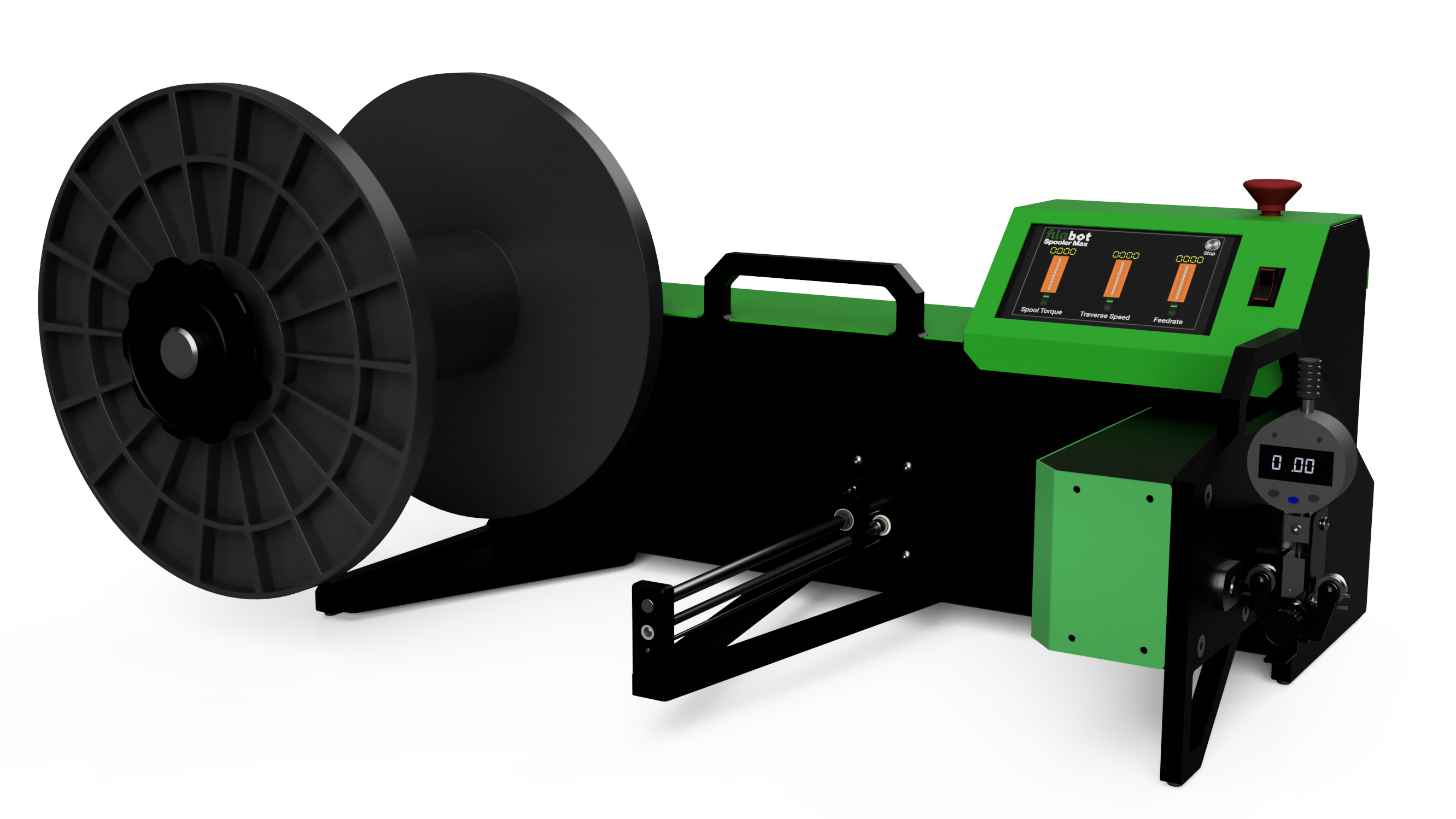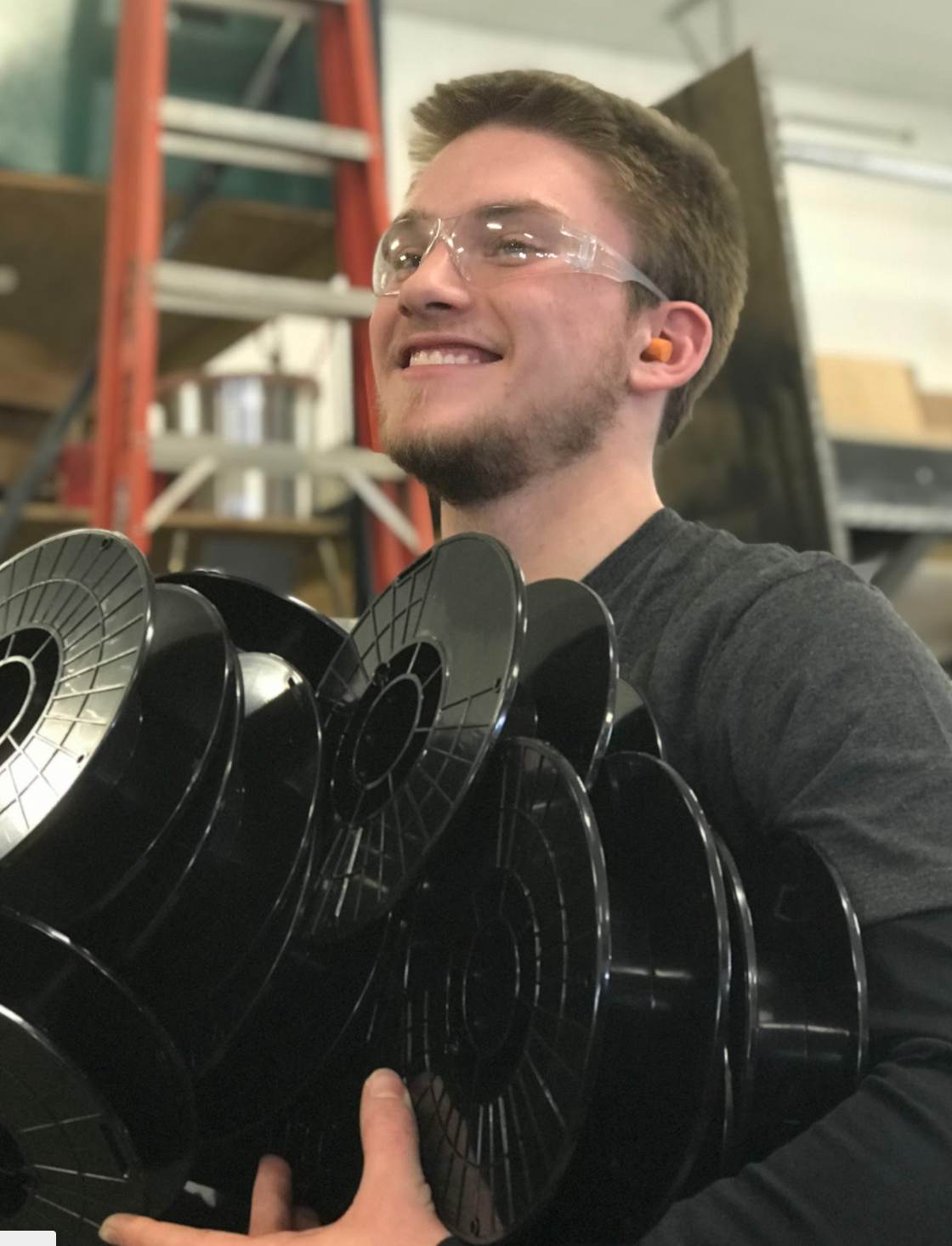3D printing has always reminded me of DNA.
That’s a lie, I just thought of it right now sitting down to brainstorm about this blog post. I’ve never actually thought that before and it’s never reminded me of DNA. Until today. One mind-blowing aspect of DNA is that it’s self-replicating - it’s like the original machine learning (intentionally implied irony). Our bodies regenerate cells that contain all the information of the previous cells. Whether or not you believe that our DNA originated from alien lifeforms (I tend to), we can all agree that it is marvelous.

Outside of nature, there are few contraptions that can replicate their own parts - 3D printers being the most obvious. The RepRap project that showed us how to print most of the parts needed to build a replica of the printer was a milestone in the timeline of 3D printing history - it captured the attention and energy of many who appreciated the simple genius of the system.
Now we are experiencing a new milestone, one with a focus on sustainability as much as it is a 3D printing novelty. This is the MasterSpool movement (#masterspool). We all buy filament to use for 3D printing. Almost all the time this filament is shipped on plastic spools, which conveniently fit onto our printers allowing the filament to feed effortlessly into the machine. When the filament has been used up we take off the empty spool, and at best, use it and three others to make a go-cart. At worst we walk to the edge of a delicate riparian ecosystem and throw it at a bird. Most of us are probably somewhere in between, recycling some and stacking the rest to make a giant pyramid in the corner.
The #masterspool Movement
The MasterSpool is an open source project where an STL file of an empty filament spool can be shared and improved. The printable spool is two parts that lock together, allowing a fresh coil of plastic filament to be loaded on and then printed with. With this mechanism, anyone can print a master spool, purchase coiled filament, and be off to the races without the need for the disposable spools of the past. For me, this was a classic “why didn’t I think of that?” moment (like when I discovered Turducken, eBay, and beer holders on lawn mowers). Why did it take so long for the collective mind to realize such a simple, cost-saving, plastic recycling solution? Probably the same reason it took us so long to put bottle openers on smartphones. Wait...
Living in a MasterSpool reality we would:
- Spend less on shipping as the weight of the spool is a significant portion of the overall weight
- Utilize less plastic as there would be no need for traditional spools
- Create less waste plastic which means less energy into recycling and less plastic into the stream
- Free up space in the corner where the empty spools go to retire
- Not worry about spool size from vendor to vendor
This is all really good stuff! There may be a few scenarios where shipping spooled filament is necessary (though I can’t think of any), but in general, this new global plan has no huge downsides. For all of this to happen though, filament vendors will need to be on board. It can take businesses years to pivot and adapt and rework manufacturing and packaging methods. The best thing we can all do as promoters of this movement is print our own MasterSpools and then purchase filament from the companies that do provide unspooled options, or make our own!
Going Beyond MasterSpool
Which leads me to my next point. Here at Filabot we quickly became excited about #masterspool. We saw the value to the customer (save money, less waste) and to the earth (less indirect energy, less waste plastic). Plus we love tweaking, inventing and wrenching on stuff under the hood. As pioneers of stand-alone filament extruder systems, this is right up our alley.
So let’s get back to DNA. Let’s say the 3D printer system is like a body, and a printer making printer parts or a MasterSpool is like a cell cloning itself. Then what do you call a 3D printer printing a spool with filament made from recycled spools? I reckon it’s some kind of anaerobic, cannibalistic, compost. Obviously.

We’ll call it plastic economy karma, and that’s what we’re doing. We fell in love with the #masterspool concept and wanted to take it one step further. At Filabot we design technology that takes failed prints and waste plastic, grinds it into granules, and then extrudes those granules or plastic pellets into new filament that can be fed back into a 3D printer. So for us, it was a no-brainer. We figure that everyone serious about 3D printing has some spools laying around, and wouldn’t it be the perfect poetry to help folks turn these spools into their very own MasterSpool. It’s the ultimate plastic DNA irony!
So we ran with it and you can watch as we discuss the process in this live video we made. Presently we buy empty spools to sell our recycled filament on, so we have a bunch lying around. There are many types of spools made from many types of plastic polymers and we decided to start with the ones that we source and see what we’d find. Our assumption was that these spools were an ABS polycarbonate. After a few cycles and setting adjustments, we successfully extruded quality filament that can be used to print a MasterSpool.
The takeaway here is that the #masterspool movement has legs to stand on. There are numerous reasons why our industry to convert to this model including lower costs for the customer and a smaller ecological footprint for our planet. The next step will be market-driven pressure, getting the large filament manufacturers to come on board and see the value of this simple innovation. If you are a 3D printing enthusiast, please consider switching to a MasterSpool system for your own setup and join the movement



